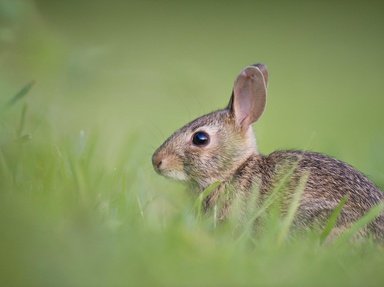Quiz Answer Key and Fun Facts
1. On which continent can over fifty percent of the world's rabbits be found?
2. Rabbits have four toes on each of their hind feet, but five on each of their front ones. What is this extra toe called?
3. Scientists have debated long and hard over the years as to which animal group rabbits belong. They were originally thought to be rodent but are now grouped in a separate class. Dentally speaking, what distinguishes a rabbit from a rodent?
4. When spotting a predator approaching, how does a rabbit warn the rest of the rabbits in the warren that peril is near?
5. Rabbits breed for nine months of every year and can produce quite a few litters in that time. Is it true that the mother has to feed her kits many times each day?
6. What is the most obvious difference between rabbits and hares?
7. Domestic rabbits, like cats, can be taught to use a litter tray.
8. In many parts of the world rabbit meat is sold as a food commodity. It used to be a popular meat sold in Sydney (NSW Australia) as well, but then became very unpopular. Why?
9. Breeding rabbits for consumption goes by a certain name. What is this?
10. Rabbit fur can be used to make small items of clothing. Angora wool is produced from a rabbit especially bred for this purpose. How is this harvested?
Source: Author
Creedy
This quiz was reviewed by FunTrivia editor
gtho4 before going online.
Any errors found in FunTrivia content are routinely corrected through our feedback system.


